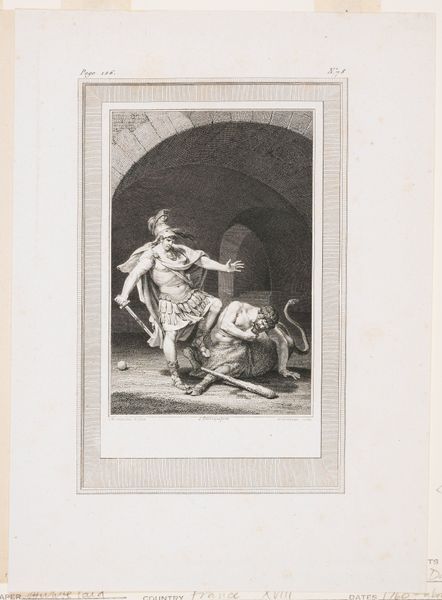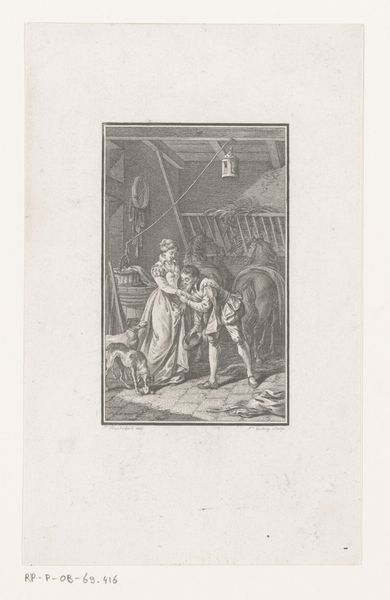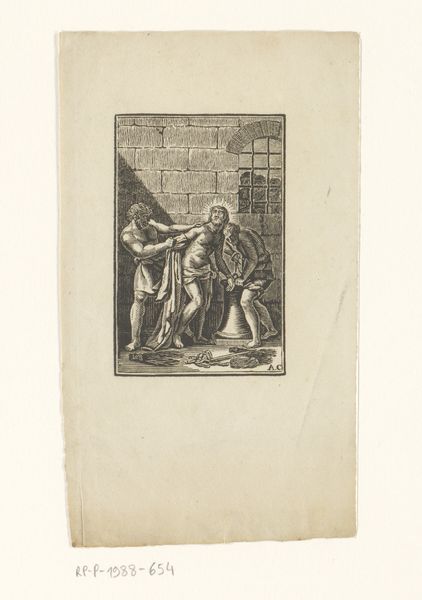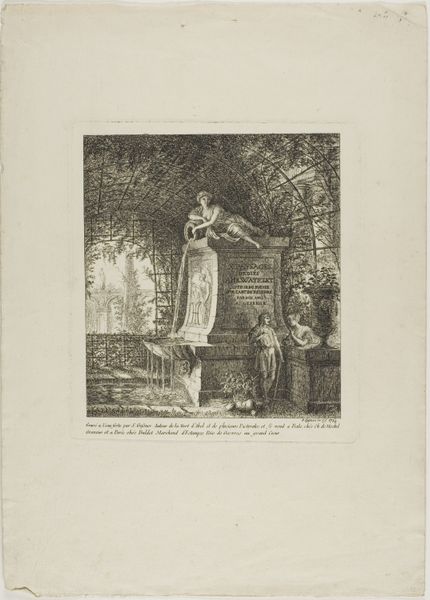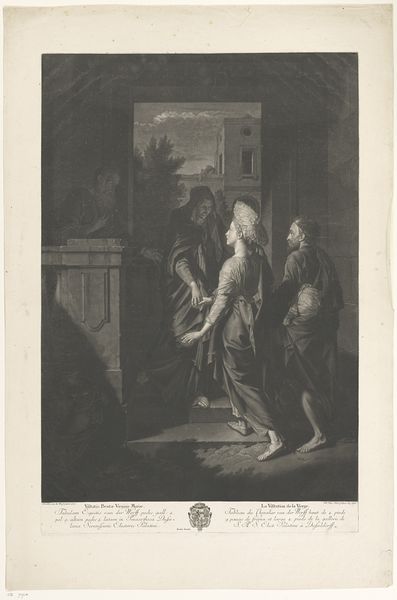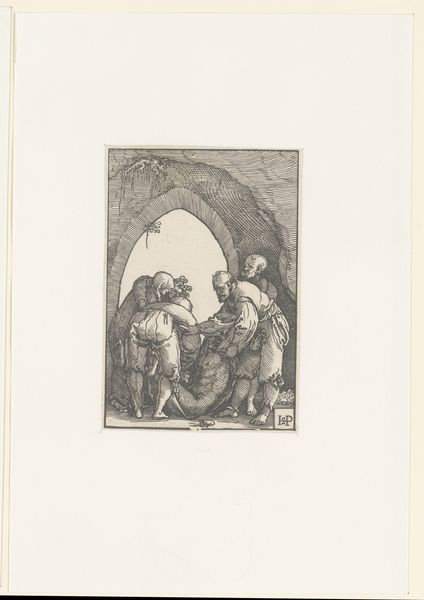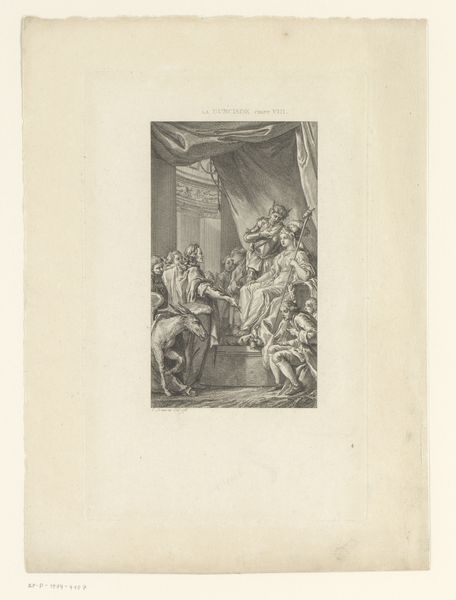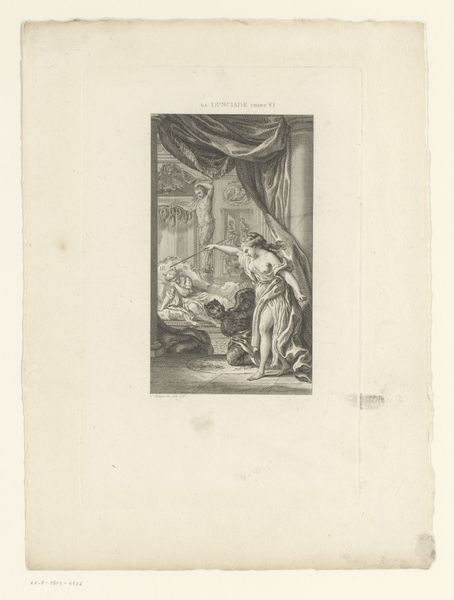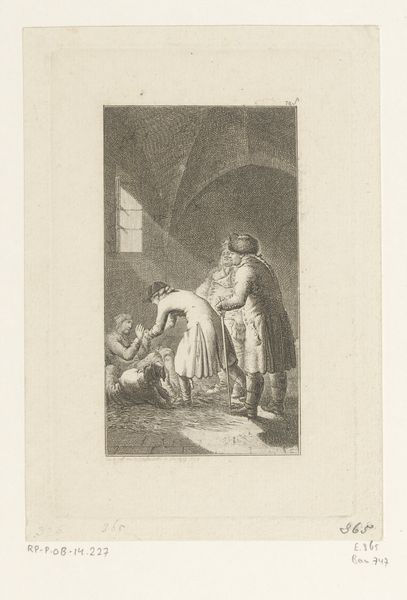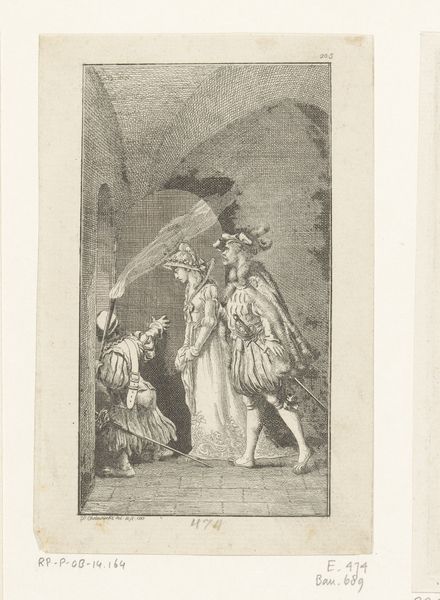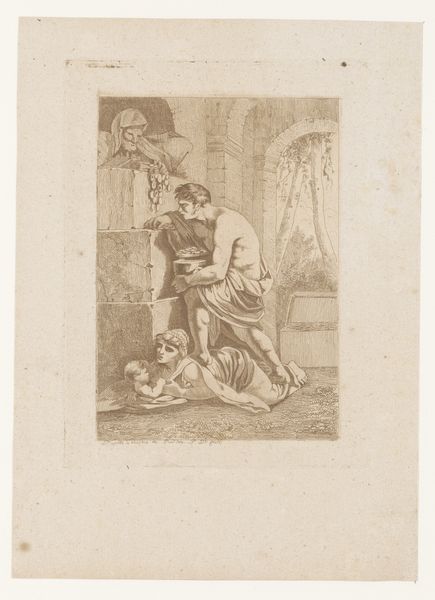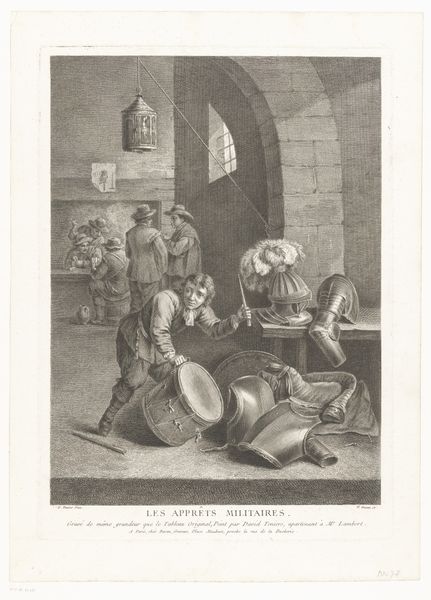
print, paper, engraving
#
narrative-art
#
baroque
#
ink paper printed
# print
#
old engraving style
#
figuration
#
paper
#
personal sketchbook
#
history-painting
#
engraving
Dimensions: height 192 mm, width 145 mm
Copyright: Rijks Museum: Open Domain
Curator: What a fascinating piece this is. It's an engraving by Abraham Bosse, made in 1639, titled "Dicargue bevrijdt Palamède uit de kerker" - that’s "Dicargue Freeing Palamedes from the Dungeon" for us English speakers. My first thought is just how wonderfully shadowy the whole thing is! The single torch really directs your eye. Editor: Shadowy indeed, and it seems almost staged, doesn’t it? Like a spotlight on the performance of rescue and suffering. Palamedes looks terribly dramatic, chained and slumped there. What do you make of the choice of this specific moment to depict? Curator: Knowing Bosse, it’s probably packed with allegorical meaning. He was very interested in theater and stagecraft, so the performative aspect isn't surprising. I think that he deliberately captured that exact moment between captivity and liberty, imprisonment, and flight. Bosse always manages to be slightly playful and profound, all at the same time, doesn't he? Editor: Definitely, and let’s consider Palamedes for a moment. He’s a figure from Greek mythology, known for his intellect but ultimately undone by treachery. The chains, of course, represent literal imprisonment, but symbolically they resonate with feelings of entrapment in general - intellectual, political, existential. Curator: Absolutely. And notice how Dicargue is positioned with that torch. He's not just holding it, he's almost weaponizing it. The light he brings is not just illumination but liberation, actively pushing back against the darkness. A bit cliché, sure, but isn't that sometimes where the real power lies? Editor: I think so! The enduring symbol of light dispelling darkness touches something fundamental. In a deeper reading, consider the implications of cultural memory too. These figures exist both within the print's "present" and within a longer history of narrative. It all speaks to the enduring nature of such imagery. Curator: Exactly, that idea is also timeless! And I think the rendering also has a unique style of the baroque era in terms of the poses and the theatrics of light and dark contrasts, making a dramatic but very striking piece. Overall, I am very amazed and happy to present it to you all today! Editor: It's certainly given me a new perspective on interpreting this type of piece. And the image's ability to capture a split second makes one reflect on those small, but definitive moments that reshape the course of time!
Comments
No comments
Be the first to comment and join the conversation on the ultimate creative platform.
